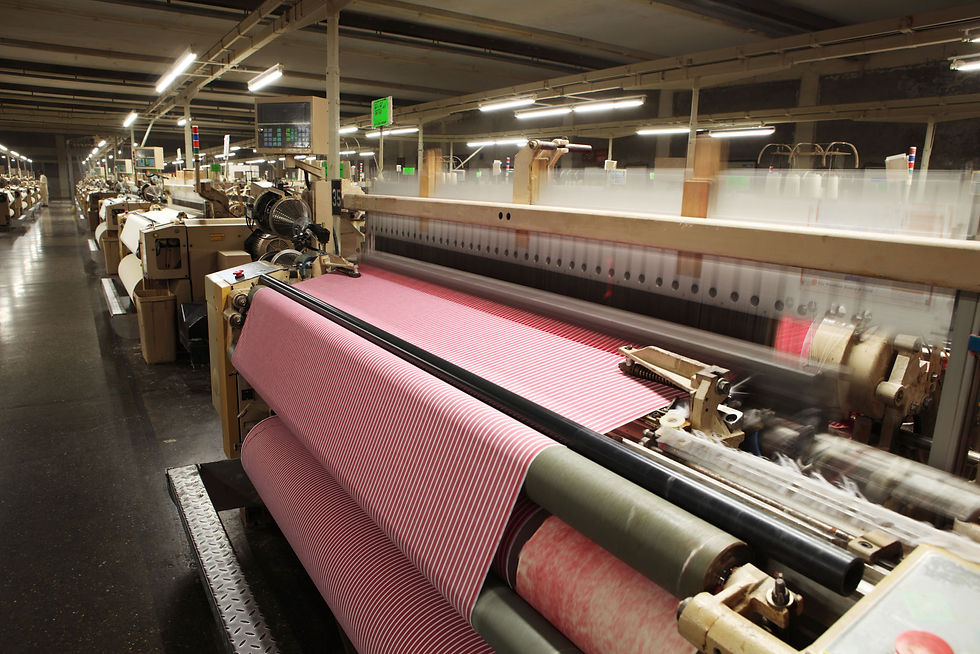
Have you ever stopped to think about how your clothes are made? The journey from raw materials to your favorite outfit is fascinating and complex. It combines creativity with scientific principles to craft items that are not only functional but also stylish. In this article, you will learn about the engineering techniques and scientific methods that transform fibers into the textiles that adorn our bodies.
The Basics of Textile Production

Fabric production starts with fibers, which can be natural or synthetic. Natural fibers include cotton, wool, and silk, all derived from plants and animals. Synthetic fibers, like polyester and nylon, are made from petrochemicals. In the United States, cotton is the most commonly used natural fiber, accounting for nearly 25 percent of global fiber consumption.
The process begins with sourcing these fibers. For instance, during cotton production, farmers harvest the cotton plants, and the cotton is then ginned to remove seeds. This step is crucial as it separates quality lint. The lint is then spun into yarn using complex machinery that ensures even thickness and strength.
Understanding Weaving Techniques
Weaving is the primary method for turning yarn into fabric. Simply put, weaving interlaces two sets of threads: the warp (lengthwise) and the weft (crosswise). This method is essential for creating various fabric types, which can look and feel entirely different from one another.
Types of Weave Patterns

Plain Weave
This is the simplest and most commonly used weaving method. Weft yarn alternates over and under warp yarn, producing a sturdy fabric. Utilized in products like bed sheets and shirts, plain weave accounts for nearly 70% of all woven fabrics.

Twill Weave
Recognizable by diagonal lines, twill fabrics, such as denim, offer durability and a unique drape. Denim is sold in millions of yards annually, emphasizing its popularity in casual wear.

Satin Weave
Known for its smooth texture and glossy finish, satin is used in formal wear and luxurious interiors. The method involves passing the weft over several warp threads before going under one, creating a surface that reflects light beautifully.
Each weaving technique affects the fabric's look, feel, and durability. The choice of weave not only impacts fashion but also functionality, making it essential for designers to understand their options.
The Role of Technology in Weaving
Advances in technology have drastically changed the weaving landscape. Automated looms and computer-controlled machinery have significantly boosted production speeds. For instance, modern looms can produce fabric at a rate of nearly 600 meters per minute while ensuring consistent quality.
Smart Textiles and Automation

Innovation extends beyond traditional weaving. Smart textiles integrate electronics into fabrics, offering added functionality. Imagine wearing a shirt that adjusts its temperature based on your body heat, enhancing comfort. These advancements provide exciting possibilities for future clothing.
Moreover, automation has led to precise weaving processes. By using robots and AI, manufacturers can increase efficiency, ensuring they meet global demand at lower costs.
Fabric Finishing: The Hidden Step
After weaving, fabrics undergo finishing treatments that improve their appearance and performance. This stage includes dyeing, printing, and applying chemicals for features like water resistance or flame retardancy.

The Chemistry Behind Dyes and Treatments
Dyeing fabrics is a complex process because different fibers absorb dyes in unique ways. For example, cotton uses reactive dyeing to achieve vibrant colors, while polyester employs disperse dyeing. The right chemistry can enhance colorfastness and vibrancy, crucial for consumer satisfaction.
This finishing step can completely change a fabric’s look while enhancing its functionality. These treatments are essential in meeting industry standards and consumer preferences in quality and design.
Environmental Considerations in Fabric Production
As we explore the textile industry, it's important to acknowledge its environmental impact. The industry is notorious for excessive water use and pollution. For instance, producing just one cotton shirt requires about 2,700 liters of water. However, many companies are adopting sustainable practices to reduce this footprint.
Sustainable Materials and Practices
The industry is shifting towards more sustainable methods, focusing on natural dyes, organic cotton, and recycling initiatives. Biodegradable synthetic fibers and post-consumer recycled polyester present promising alternatives to conventional fabrics.

Techniques such as zero-waste pattern-making and closed-loop production systems aim to minimize waste. By adopting sustainable practices, the industry is making strides toward a greener future. In fact, the global organic cotton market is expected to grow by 25% over the next five years, illustrating consumer demand for eco-friendly choices.
The Future of Weaving and Fabric Engineering
As technology and consumer expectations continue to evolve, the future of fabric engineering looks promising. The integration of traditional craftsmanship with advanced techniques is set to reshape clothing manufacturing.
Trends Shaping the Industry
We can look forward to customizable fabrics that allow consumers to choose not only designs but also functional properties. Imagine a fabric that alters its thickness in response to temperature changes.
Moreover, artificial intelligence will optimize production processes, reducing waste and improving efficiency. The push for transparency and ethical manufacturing will also motivate brands to commit to sustainable practices, as more consumers seek responsible options in their fashion choices.
How Kids Can Explore Textile Science
Sewing Kits: Our "Sew Around the World" sewing kit provides a hands-on experience, allowing children to stitch, stuff, and decorate characters from various cultures, enhancing fine motor skills and cultural awareness.
DIY Weaving: Let them try a simple loom weaving project to understand tension and patterns.
Fabric Testing: Compare different fabrics by testing their stretchiness, water absorption, and durability.
Dye Experiments: Use natural dyes like turmeric, beet juice, or tea to explore the chemistry of fabric coloring.


Comments